A Norfolk Island pine is the perfect Christmas houseplant – here's how to grow one
This pretty little pine will grace your home for the festive period and beyond
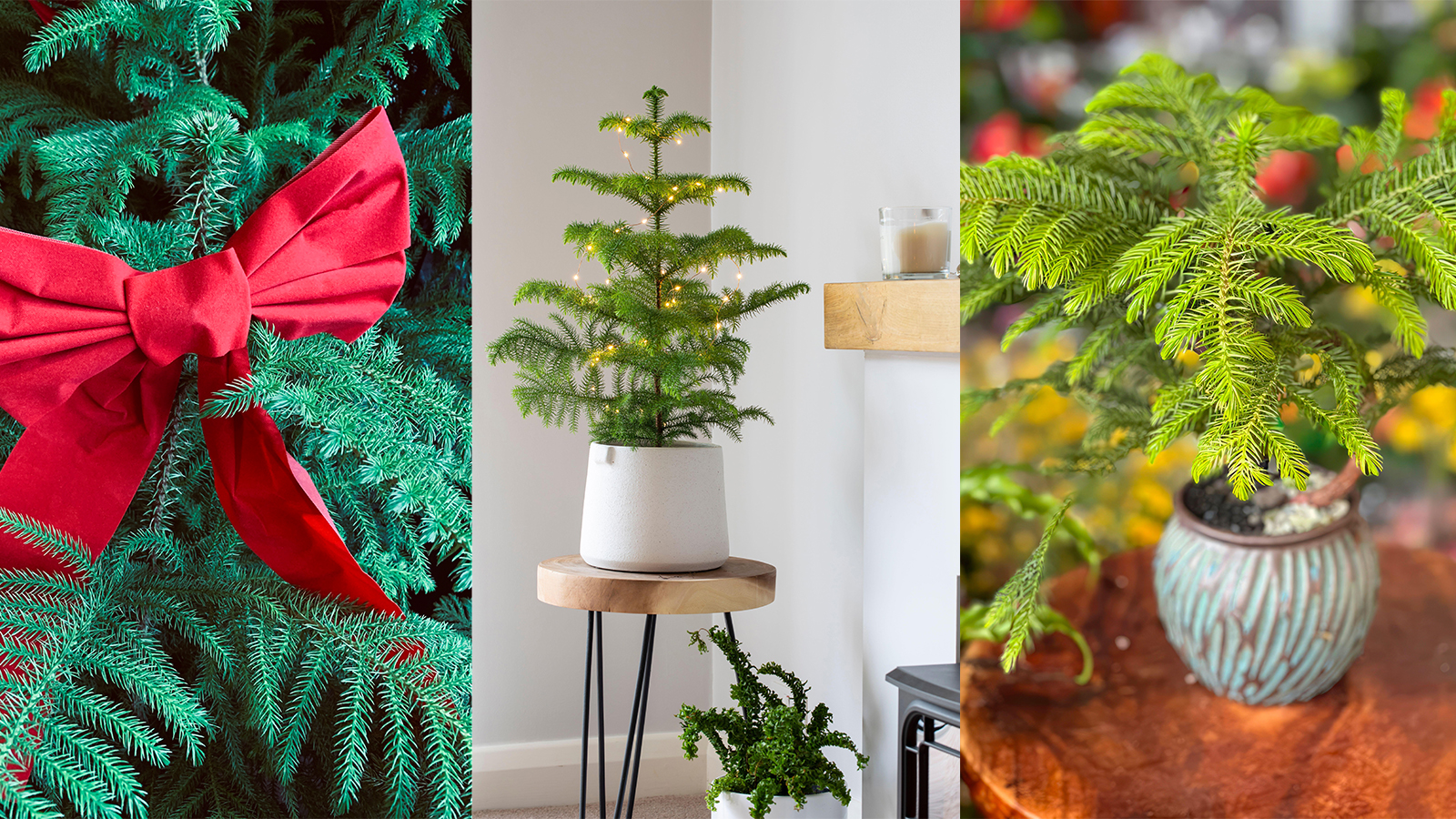

As houseplants go, you'd be hard pressed to find one which resembles a Christmas tree more than the Norfolk Island pine. And it will last long after the festive period is over.
This mini tree will live happily in a pot as part of your indoor plant display for years to come, unlike many pot-grown trees, which need to be transplanted outdoors in order to keep them alive.
With the right care and positioning your Norfolk Island pine will become a multi-facetted focal point, giving tropical jungle foliage during the summer and festive Scandi vibes in winter.
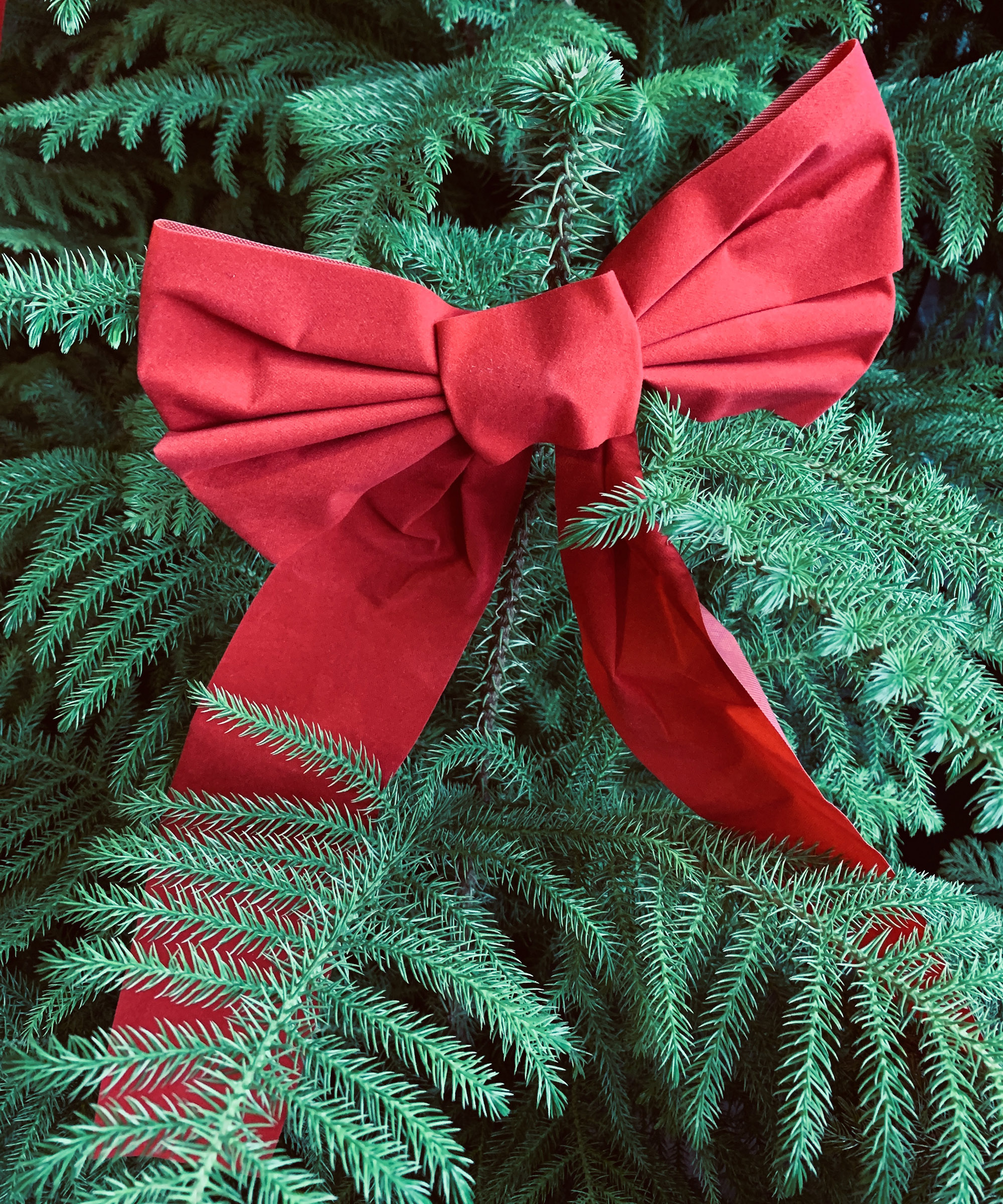
Adding festive touches to your Norfolk Island pine will dress it up for Christmas
Norfolk Island pine care tips
Tree care expert Lisa Tadewaldt talks us through the care essentials when it comes to keeping Norfolk Island pines as indoor plants.
You can pick one up for yourself easily online at reputable tree suppliers. Try this Norfolk Island pine tree at Fast Growing Trees.

Lisa Tadewaldt is co-founder of Urban Forest Pro, a tree care company based in Portland, Oregon, U.S. An ISA Certified Arborist, Lisa has been in the tree care business for over 20 years and has established a great reputation as a tree care expert within the industry.
1. Find a warm and sunny position
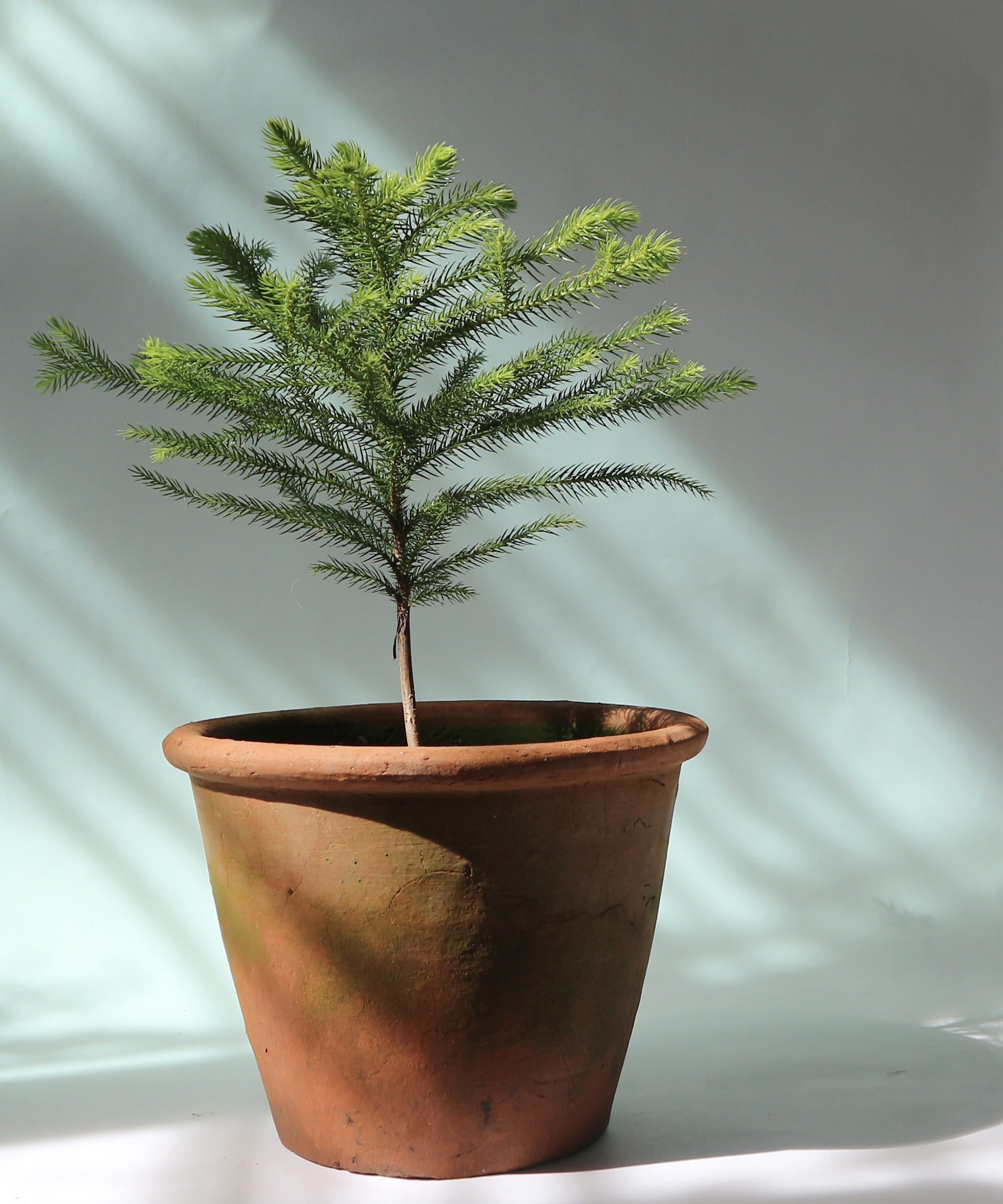
This Norfolk Island pine needs plenty of light indoors
It's important to note that Norfolk Island pines' natural habitat is tropical or subtropical. It gets its name as it's a native of Norfolk Island in the Pacific. So finding a warm, sunny spot indoors is key.
'Norfolk Island Pine trees love the sun, if you are planning to grow them inside your home then the sunnier the spot is the better,' says Lisa.
Design expertise in your inbox – from inspiring decorating ideas and beautiful celebrity homes to practical gardening advice and shopping round-ups.
Unlike many low light indoor plants which will shrivel in sun, the Norfolk Island pine will thrive in it. 'They need at least a few hours of indirect bright light every day but direct light is better,' says Lisa.
If your plant starts to turn yellow, this is a result of not getting enough light.
2. Give it plenty of water
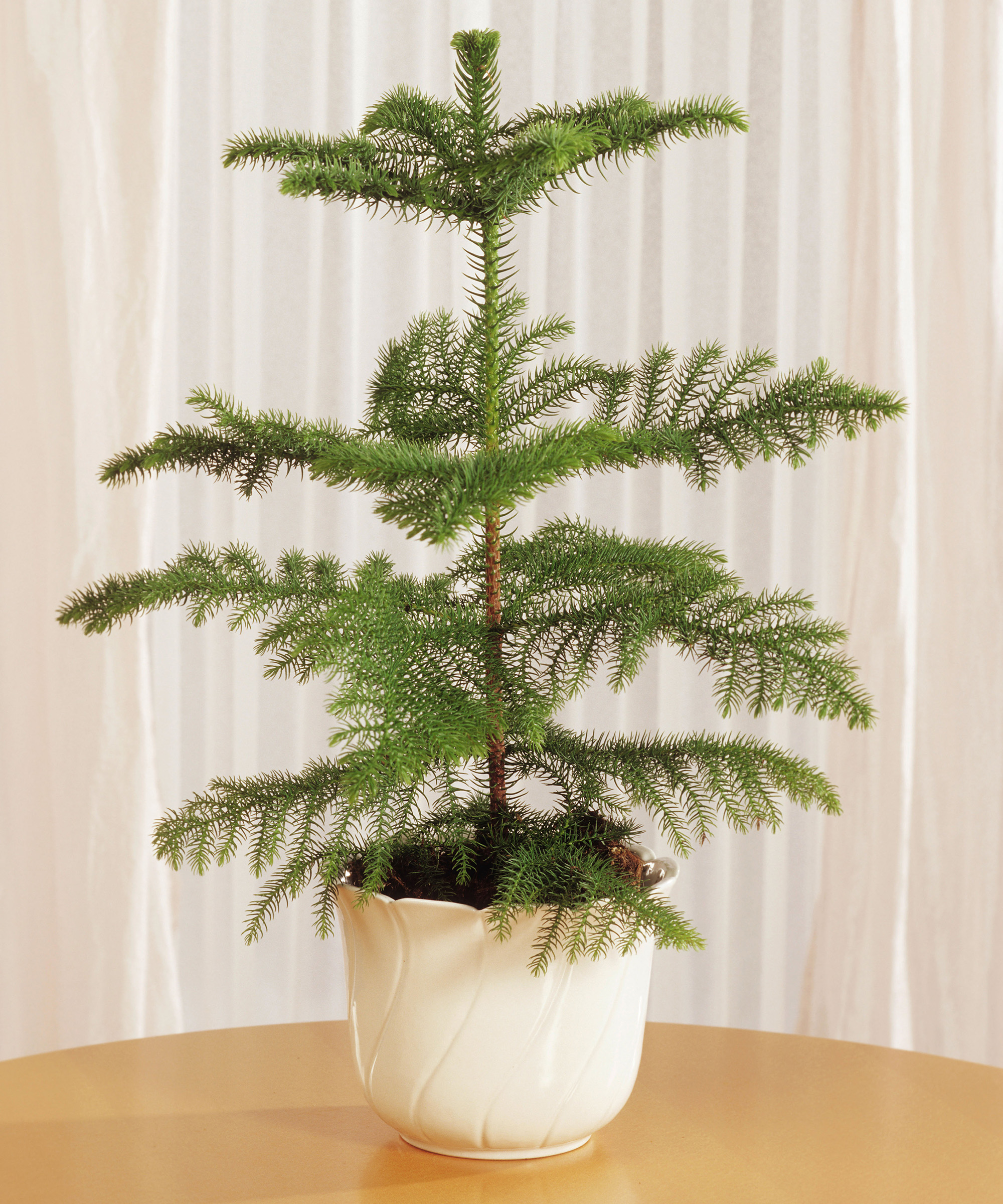
Water your pine as it dries out once or twice a week
These types of pine trees are quite thirsty so it's important not to neglect your watering schedule for long.
'A complete saturation of your Norfolk Island pine's root system a couple of times per week is best,' says Lisa.
'The roots like to dry out completely in between waterings, so this might mean reducing to once a week in winter, depending on the humidity and temperature of your home,' says Lisa.
3. Provide it with lots of nutrients
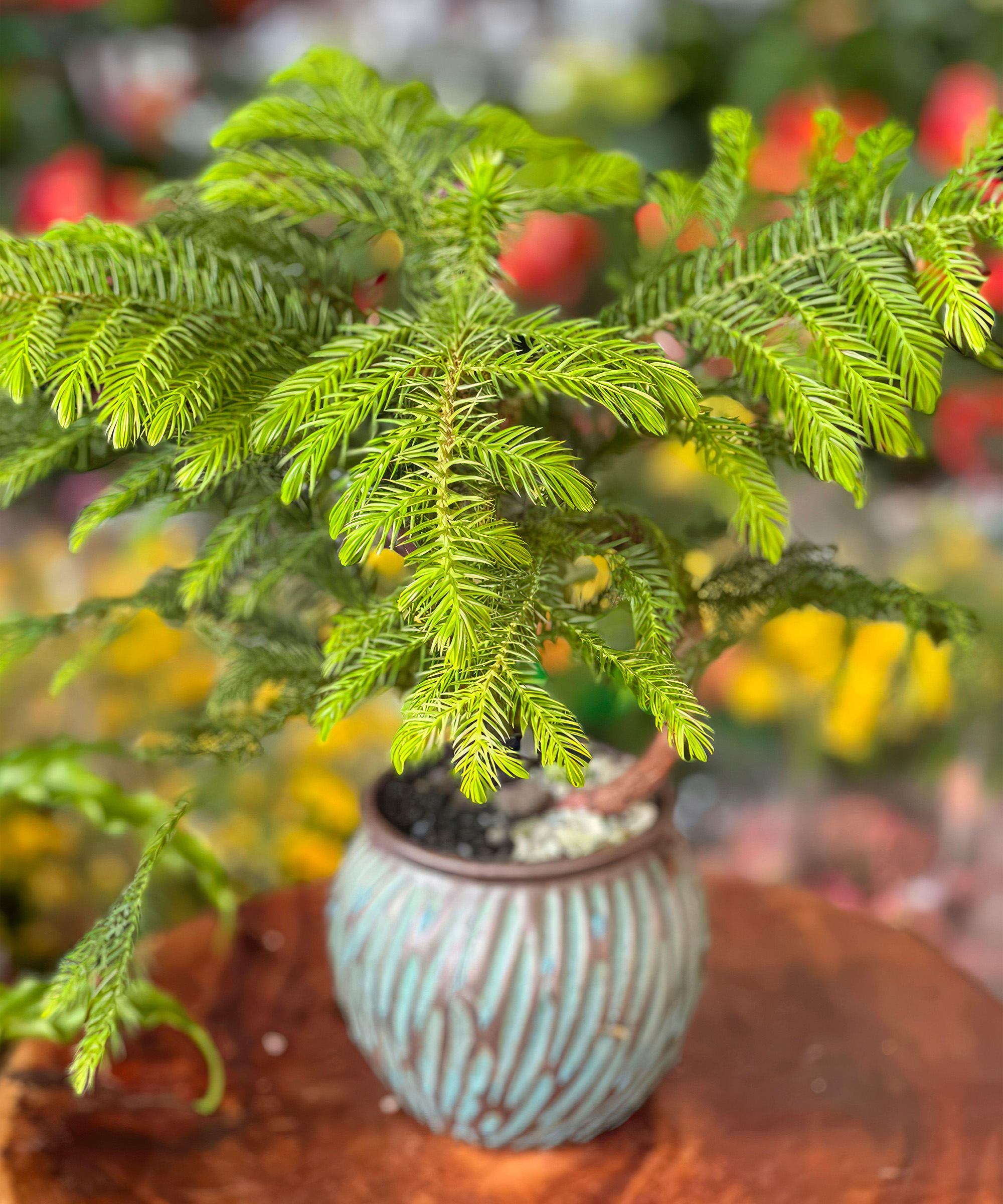
Norfolk Island pines prefer acidic soil
Alex Kantor, owner at Perfect Plants nursery says that a balanced houseplant fertilizer can be added during the growing season in spring and summer.
Lisa Tadewaldt agrees that adding fertilizer is an easy way to give the potted indoor trees the nutrients they would receive from the forest floor in the wild. However, she prefers to pot hers in an acidic nutrient-rich soil from the get go.
'I add a very light layer of compost to the top each year. It is best to refresh the soil by repotting it every 3-4 years instead of continuing to add fertilizer to existing soil,' she says.

Alex has worked in the horticultural industry for over 20 years. Alex is an expert on landscape trees, shrubs, and indoor plants. He is passionate about growing and helping others learn the trade.
4. Protect it from changes in temperature
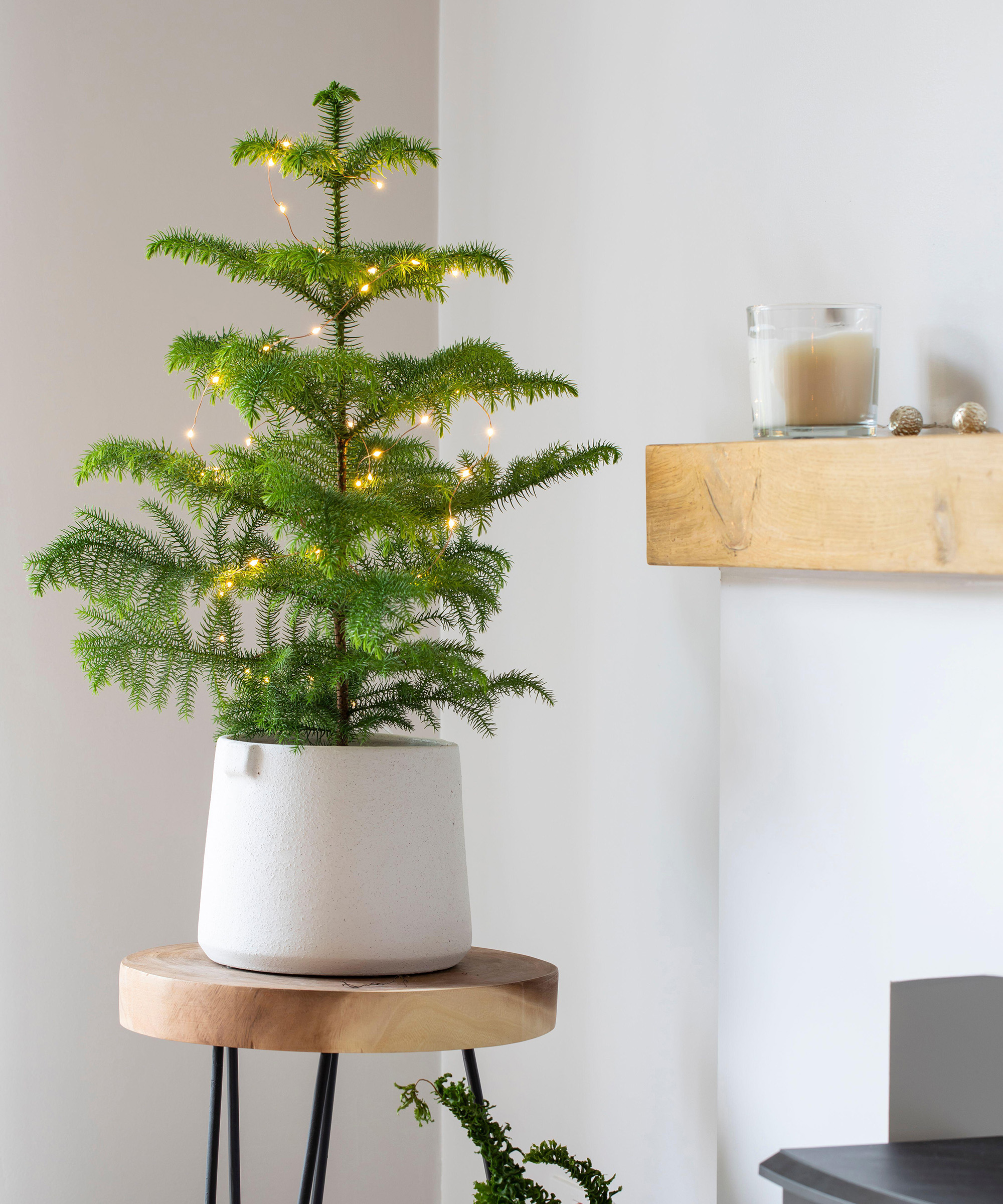
Use LEDs for decorating your Norfolk Island pine as they emit less heat than regular string lights
You may have figured it out by now, but although Norfolk Island pines are often sold as small Christmas trees, they are in fact a tropical species that come from the araucaria genus.
'They thrive in temperatures between 50-70°F with moderate humidity levels,' says Alex Kantor. 'They are sensitive to extreme temperature changes and you should protect plants from central heating or cold drafts,' he says.
5. Prune it to shape
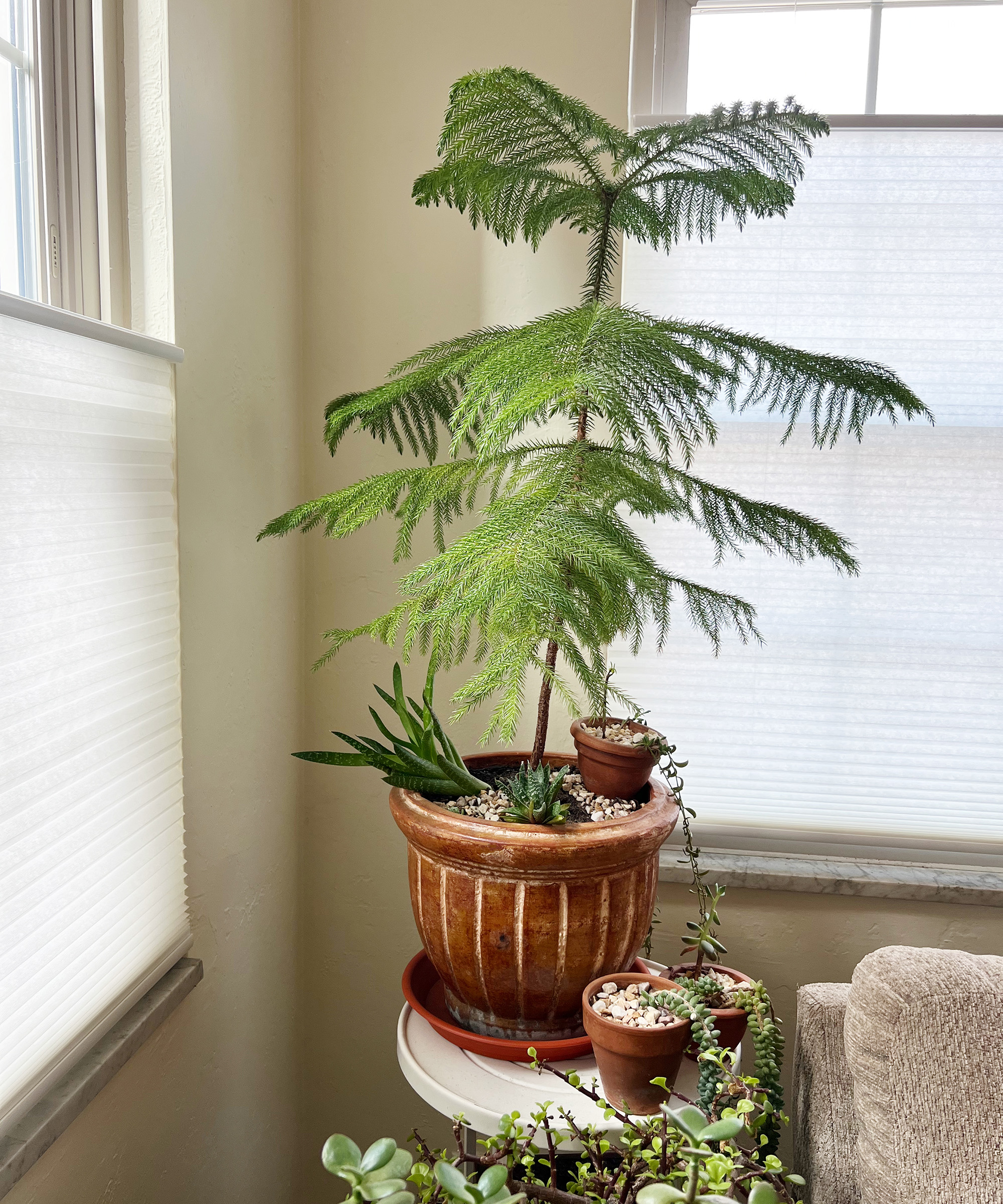
A bi-annual clipping will keep your plant in good shape
'There are many acceptable pruning styles for this tree,' says Lisa Tadewaldt. 'I recommend finding some photos online to use as a guide for the look you want,' she says. There are some really inspiring ideas on how to prune certain plants, such as cloud pruning, which is more suited to classic pine trees.
If you're planning on using your Norfolk Island pine as a Christmas tree, then be sure to avoid pruning the central stem. This will cause off-shoots of growth and it will lose its classic Christmas tree shape.
Lisa also recommends you take it easy when it comes to pruning and do so only twice a year at most. 'Only take up to 10% of the total canopy at a time,' she advises.
FAQs
Can I put my Norfolk pine outside?
A Norfolk Island pine grows outdoors in pots on a sunny patio in USDA hardiness zones 4-11. If growing out in the backyard, only do so in USDA zones 9-11. Be aware that it can grow to be a tall tree, so it will need plenty of growing space in the garden.
How tall does a Norfolk Island pine get?
'A Norfolk Island Pine can grow to over 100 feet tall in their natural environment, so the size is going to be dependent on the size of the pot and your pruning methods,' explains tree care expert Lisa Tadewaldt. 'It is common to see people with 10-12 ft ones indoors,' she says.
As we've discovered, Norfolk Island pines aren't only an investment for Christmas. They can be kept and enjoyed for many years. They are an ideal candidate for sustainable Christmas ideas.

Teresa was part of a team that launched Easy Gardens magazine two years ago and edited it for some time. Teresa has been a Gardens Editor at Homes & Gardens, Country Homes & Interiors and Living Etc magazine since 2020 and has developed close working relationships with top garden designers, and has been exposed to an array of rich garden content and expertise.